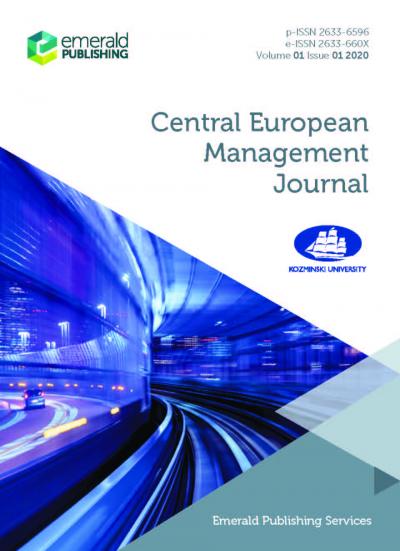Motivational Factors to be a Mentor in Formal Mentoringin Organisations. The Role of Intrinsic and Extrinsic Motivationin the Propensity to Mentor
Wioletta Małota
Collegium Civitas
2017 25 (4) Central European Management Journal
DOI 10.7206/jmba.ce.2450-7814.210








